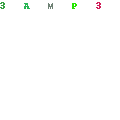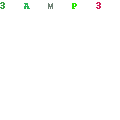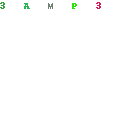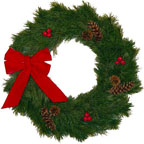The Christmas season is not just sights and sounds. What is Christmas without the smells and tastes of Christmas cookies, Christmas ham, egg nog, wassail, candy, and other good things coming out of the kitchen during this season?
The history of Christmas Cookies began with the people of the Persian Empire of the 7th century AD. The actual word ‘cookie’ comes from the Dutch word Koeptje [koekje], meaning small cake or bread. Cookies spread all over Europe by 1500. Gingerbread was probably the first cake/cookie to be traditionally related with Christmas. The people of Sweden preferred Papparkakor (spicy ginger and black-pepper delights), while the Norwegians took to the liking of Krumkake (thin lemon and cardamom-scented wafers).
Our Christmas cookies are my mother’s old-fashioned tea cookies: 3/4 cup crisco, 1 cup sugar, 2 eggs, 1 & 1/2 teaspoon vanilla, 2 & 1/2 cup Self-rising flour. Mix all together, roll out, cut into shapes, and bake at 350 for about 12 minutes. Ice with butter cream frosting: 1 box confectioner sugar, dash of salt, 1 teaspoon vanilla, 1/4 cup milk, 1/3 cup butter. Making the Christmas cookies is a family tradition that we usually do together each year.
Eggnog is related to various milk and wine punches that had been concocted long ago in the “Old World”. However, in America a new twist was put on the theme. Rum was used in the place of wine. In Colonial America, rum was commonly called “grog”, so the name eggnog is likely derived from the very descriptive term for this drink, “egg-and-grog”, which became egg’n’grog and soon eggnog. Other experts say that the “nog” of eggnog comes from the word “noggin” which was a small, wooden, carved mug. It was used to serve drinks at table in taverns. The true story might be a mixture of the two and eggnog was originally called “egg and grog in a noggin”. Whatever the name, it was served to enhance your joy 🙂
Wassail is a hot, spiced punch often associated with winter celebrations of northern Europe, such as Christmas, New Year’s and Twelfth Night. The term itself is a contraction of the Old English toast wæs þu hæl, meaning “be in good health”. A popular Christmas song mentions wassailing, which is groups of people either bearing wassail or begging for it, going from house to house singing and reveling. This is believed to be a custom of helping the poor without placing them in the category of, as a version of the song notes, “daily beggars”. It is also a way of preserving a perishable crop – apples, by turning them into something that can be preserved – cider, which is traditionally a central ingredient for Wassail. Today sugar and ale spiced with ginger, nutmeg, and cinnamon are placed in a bowl, heated, and topped with slices of toast.
For our family, we enjoy ‘Christmas punch’: put half a gallon of lime sherbert in a punch bowl and pour a 2 liter of ginger ale over it. Let the sherbert melt just a little. It is delicious.
Yule Ham is a traditional dish in Scandinavian and English celebrations. The tradition is often suggested to have began as a tribute to Freyr, a major German god associated with boars and fertility. The boar’s head with apple in mouth was carried into the banquet hall as a sacrifice with the intent of imploring Freyer to show favor in the new year.
Our family enjoys a Christmas smoked ham (without the head!). The recipe is simple: Trim the fat from a smoked ham. Wrap it in tinfoil and cook all night on Christmas Eve at 325 degrees. Next morning as you awake to a delicious smell, mix 3/4 can of coke, a large can of crushed pineapple, and one box of brown sugar. Pour over the ham and cook for one more hour. During the hour, baste often with the juice and sugar as deep into the meat as you can. Yummm!
So how do we transform this to make it a reminder of the birth of Jesus Christ?
As you eat the Christmas cookies, remember the time that Jesus gave bread to his disciples as recorded in Mark 14:22, Jesus took bread, and blessed, and brake it, and gave to them, and said, “Take, eat: this is my body.” Jesus called Himself the Bread of Life…He will sustain us.
As you drink the eggnog, wassail, or the punch, remember that it is Jesus who will spice up our lives and He is the only source of joy. Remember the verse in Luke 2:10 Then the angel said to them, “Do not be afraid, for behold, I bring you good tidings of great joy which will be to all people.”
As you eat your Christmas ham, remember that Jesus was the once and for all sacrifice. Hebrews 7:27 He does not need to offer sacrifices every day like the other high priests. They did this for their own sins first and then for the sins of the people. But Jesus did this once for all when he sacrificed himself on the cross.




